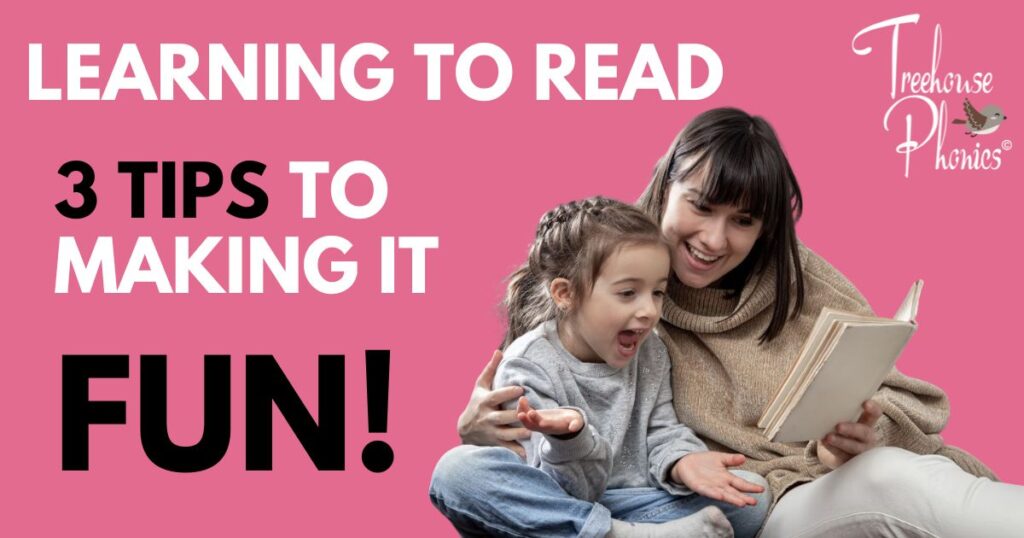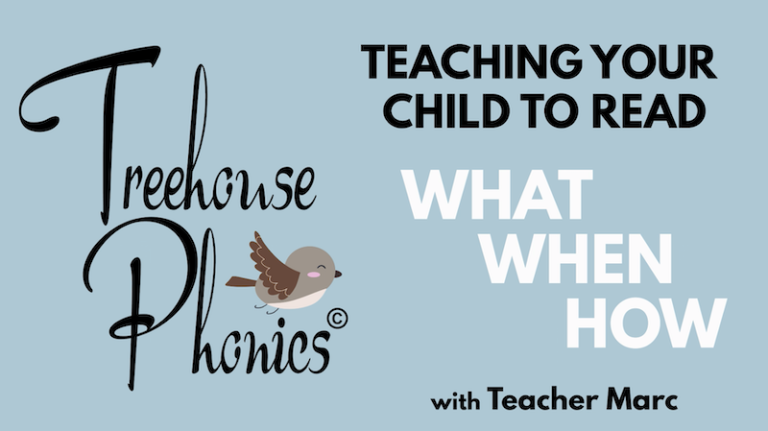Learning to read may be the single most important skill your child needs to learn. The thing that concerns me the most is the outcry I hear from hundreds of parents each week across homeschool social media groups that teaching their child to read felt like rocket science. One of the main reasons? Their child was bored out of their skulls! Even if you knew exactly what, how, and when to teach reading, every best intention or carefully crafted lesson will fall flat if your child considers reading a chore and a bore. Everyone, not just children, learns best when learning is fun. Reading is too important to pawn off instruction on someone else. You are still the best person for the job. So here are 3 tips to help put the zing back into your reading lessons and nurture a love for books that will benefit your child for decades to come!
Tip #1 – Respect the Attention Span

Establish the bare minimum. Start by setting clear, definable goals. We’ll call this ‘The Big Picture’. Keeping the big picture in front of you, list no more than five milestones your child will need to achieve to reach that goal. These steps (milestones) should not be more than a word or two in length. Easier to remember. If you are struggling to keep it down to five simple milestones, then the goal is likely too big. With these five milestones set in place, you now have a place to retreat to when lessons start to drag. When your lessons are tailored to prioritize essential skills or concepts within the first five or ten minutes of the lesson, all is not lost if your child suddenly has the attention span of a goldfish.

Work within the attention span. Short attention spans are not the enemy. If you fight it, it will resist. As you work within that time frame, focus on only one of the five tiny morsels of highly concentrated milestones you wrote down when you mapped out your path to the Bigger Picture (Goal). You’ll feel relaxed knowing that right out the gate, you achieved something academic so whatever did not go as planned, your child has still taken a step forward and is that much closer to mastering a new skill. When it comes to teaching your child to read, your child will learn tenfold in a five-minute fun-filled lesson than an hour of poorly planned force-fed curricular fluff.
Tip #2 – Build Anticipation

When was the last time you sat down and read a novel cover to cover in a single day? A literal case of not being able to a book down. Even if we found such a page-turning goldmine of intrigue and suspense, most of us don’t have the luxury of reading cover to cover in one session and you know what? It’s better anyway, for two reasons. Let’s say you read a passage that has you gasping out loud, only to have to put the book down and wait for your next free moment to find out what happens next. The anticipation builds and creates excitement and you now have something new to look forward to. The second reason involves comprehension and retention. Reading in smaller chunks allows you to meditate on the scenes and characters and helps you remember some of the finer details that always make the book better than the movie.
Can you help your child feel the same joy and excitement when reading or being read to? Do we want them to understand and retain what they hear and read? Certainly! Recreate the same circumstance that helped you feel the same way. When you read to them, abruptly stop when the tension in the story is almost unbearable. Does Goldilocks get eaten by the three bears? I guess you’ll have to find out tomorrow. You’ve shortened the lesson (reading session) to build anticipation and that will be way more fun than trying to plow through book after book for the sake of checking off a list of “Books I’ve Read”.
Tip #3 – Keep it Fresh!

It takes around a week to film and edit a single episode of Sesame Street. They cram an average of 8 to 12 segments in a single half-hour episode and they entertained and educated children since November 10th, 1969! They understand attention spans and have taken considerable efforts to keep it fresh from one skit to the next. Did I mention that there are hundreds of professionals involved in the process? How on God’s green earth are you supposed to compete with THAT? I’m here to tell you that you CAN and will do it even BETTER!
Children’s television lacks the secret sauce that makes homeschooling one of the best ways to educate a child. This secret sauce has but only two ingredients. Pacing and personal attention. The entertainment industry could never compete with a parent who knows their child’s abilities, attention span, interests, and weaknesses. Even professional teachers fall behind compared to what you can bring to the table.
Here are a few practical suggestions that will breathe new life and excitement into your homeschooling and help your child form a real love for literature.
Engaging Activities. Incorporate interactive and engaging activities that promote active participation during reading lessons. For example, include discussions, role-playing, reading games, or hands-on activities related to the reading material. These activities can enhance comprehension and make the lessons enjoyable while keeping them brief.

Let’s kick it up a notch!
Most of the more credible and effective reading programs will boast that they have incorporated multisensory learning into their curriculum as prescribed by the Orton Gillingham approach. I agree wholeheartedly that a child learns best when engaging as many of the senses as possible. Here are a few suggestions that might help you achieve this and by the way, their all FUN!
Letter Treasure Hunt. Hide foam letters or flashcards around the house or outdoor area. Encourage the child to search for the letters and name them as they find them. This activity helps reinforce letter recognition.
Word Building with Playdough. Provide the child with playdough and letter stamps or cutouts. Have them roll out the playdough and stamp or arrange the letters to create words. It combines sensory play with literacy practice.
Sight Word Hopscotch. Create a hopscotch grid using chalk on the floor or use masking tape indoors. Instead of numbers, write sight words in each square. The child can read the word aloud before hopping on it. It adds a physical element to sight word practice.
Story Time Puppets. Make simple puppets using paper bags or craft sticks. Encourage the child to retell stories or act out their own narratives using the puppets. This activity enhances storytelling skills and promotes reading comprehension.
Rhyme Time Memory Game. Create pairs of cards with rhyming words (e.g., cat-hat, sun-fun) and place them face down. Take turns flipping two cards and reading the words aloud. If they rhyme, the player keeps the pair. This activity reinforces phonological awareness and memory skills.
Alphabet Scavenger Hunt. Give the child a basket or bag and challenge them to find objects around the house that start with different letters of the alphabet. Encourage them to name the objects and their beginning sounds. It strengthens letter-sound correspondence.
DIY Mini Books. Help the child make their own mini books by folding paper and stapling them together. They can write or draw simple stories or copy familiar sentences from books they’ve read. This activity promotes writing skills and reinforces reading fluency.
Reading Recipe. Choose a simple recipe or create one together. Let the child read the ingredients and instructions aloud while you prepare the dish. It combines reading practice with real-life application and a tasty reward!
Leverage Technology. Take advantage of digital resources, educational apps, and online platforms that offer interactive reading materials or e-books. These tools often provide features like read-along options, interactive quizzes, or audio support, which can make the reading process more efficient and engaging.
Bonus Tip – Win Every Single Day!

Have you ever played a game, and kept losing? It’s even worse when your opponent is gloating over their victories. I want you to paint a clear mental picture of what that felt like. I can guarantee that it wasn’t fun. What about the opposite? How fun is winning? Feels great to win! We want our children to win every single day and there are ways to ensure they will. If want to know more, check out my article, Goals That Promote Winning put clicking the link below.

Did you know that the reading process involves the cooperation and collaborative efforts of over nine brain areas at once? It is indeed a complicated process and unlike oral language acquisition, we are not hardwired to absorb the skill of reading through osmosis. It takes consistent effort and energy to reach a respectable level of proficiency. Yes, it’s hard work. Does work have to feel like work? Have you ever heard that it will never feel like work if you make a living doing what you love to do? When something is fun and exciting, the time seems to fly by. Your child can feel the same about reading and even form a love for it that will last a lifetime. We owe them that. I hope this article inspires you and I look forward to helping you through the entire process of teaching your child to read. Check out the free course below to find out more!



